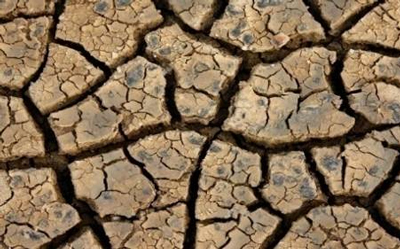Precipitation Changes
As the air temperature warms, the rate at which water evaporates from soils and waterbodies increases, and that increases the amount of water being held in the atmosphere. Because there is more atmospheric moisture, there are heavier downpours when it rains. While moderate increases in annual average precipitation are expected, there is likely to be a wider variation in the pattern of rainfall, specifically, drier dry periods punctuated by more intense rainfall.
Observations compiled by NOAA’s National Climatic Data Center (NCDC) show that total annual, average precipitation over the contiguous United States has increased at an average rate of 6.1 percent per century since 1900, although there was considerable regional variability. The greatest increases were in the East North Central climate region (11.6 percent per century) and the South (11.1 percent).
Future projections suggest (IPCC, 2008a, 2007a and 2001) the following:
- Annual average precipitation increases in the northeastern United States and decreases in the southwest.
- In the Midwest and Great Lakes, lake and river levels will be lower.
- In the Great Plains, there will be intensified springtime floods and summertime droughts, and agricultural productivity will likely shift northward as the droughts increase.
- Projected warming in the western mountains by the mid-21st century is very likely to cause large decreases in snowpack, earlier snowmelt, more winter rain events, increased peak winter flows and flooding, and reduced summer flows.
Note: Regional precipitation projections from climate models must be considered with caution because they demonstrate limited skill at small spatial scales.
References:
IPCC. 2001. Climate Change 2001: Impacts, Adaptation, and Vulnerability. Contribution of Working Group II to the Third Assessment Report of the Intergovernmental Panel on Climate Change [McCarthy, J.J., O.F. Canziani, N.A. Leary, D.J. Dokken, and K.S. White. (eds.)]. Cambridge University Press, Cambridge, United Kingdom and New York, NY, USA, 1032pp, accessed August 31, 2009. ![]()
IPCC. 2007a. Climate Change 2007: Impacts, Adaptation and Vulnerability. Contribution of Working Group II to the Third Assessment Report of the Intergovernmental Panel on Climate Change [Parry, Martin L., Canziani, Osvaldo F., Palutikof, Jean P., van der Linden, Paul J., and Hanson, Clair E. (eds.)]. Cambridge University Press, Cambridge, United Kingdom, 1000 pp, accessed August 31, 2009. ![]()
IPCC. 2008a. Climate Change and Water. IPCC Technical Paper IV, accessed August 31, 2009. ![]()
Graphic Reference:
NOAA/NESDIS/NCDC, as found in EPA. 2008t. Climate Change Web Site. Climate Change—Science: Precipitation and Storm Changes, accessed August 31, 2009.
![[logo] US EPA](https://www.epa.gov/epafiles/images/logo_epaseal.gif)
